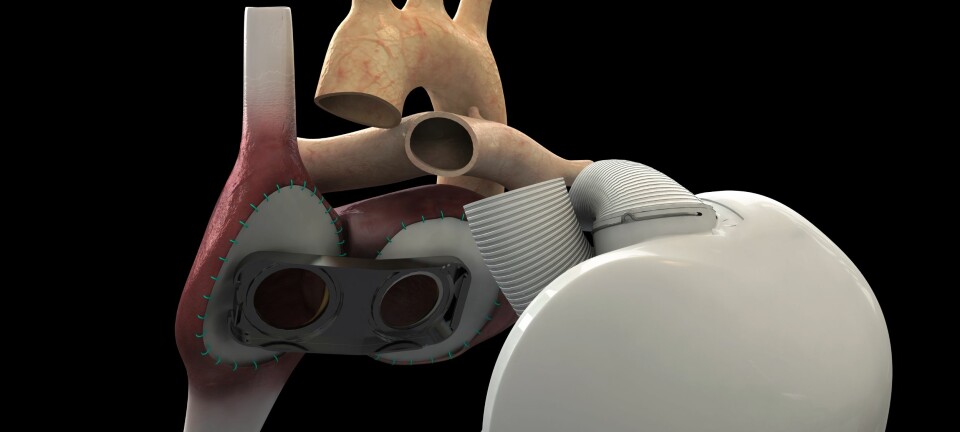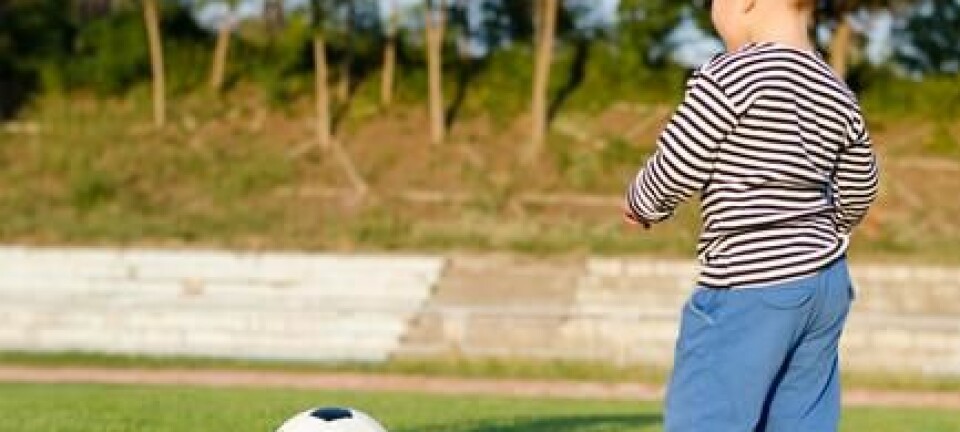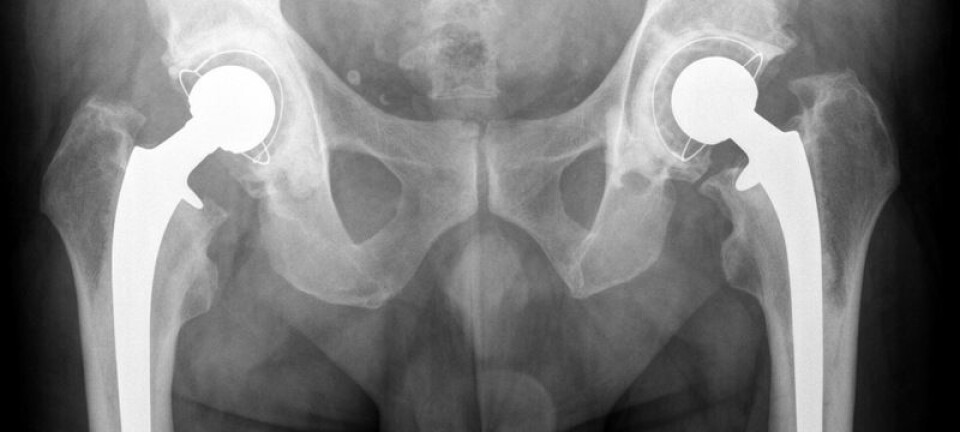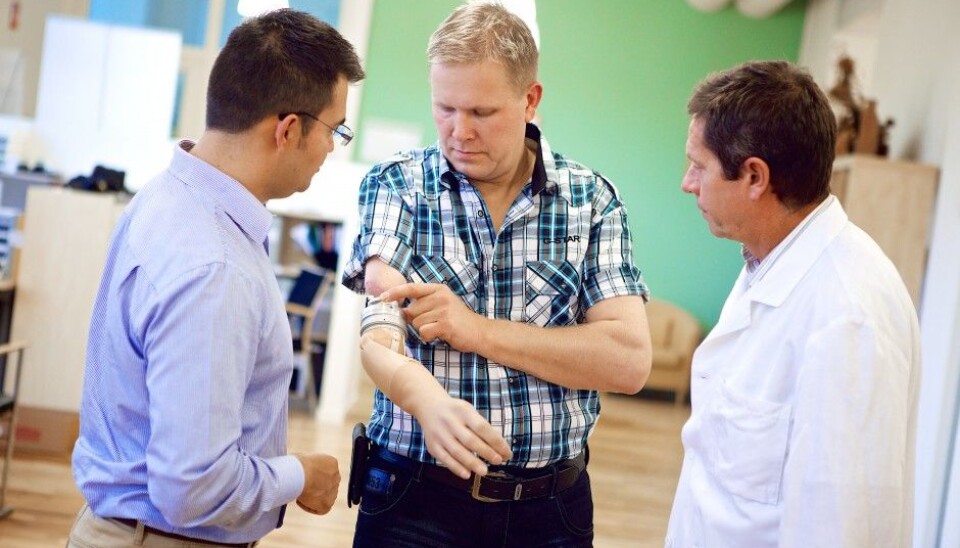
Brain-controlled prosthetic arm connected to nerves
A just-published study in Science Translational Medicine describes the success of a new kind of prosthesis, used by a Swedish truck driver for more than a year. The researchers say the device moves us one step closer to more natural control of artificial limbs.
Denne artikkelen er over ti år gammel og kan inneholde utdatert informasjon.
A cyborg is a fusion between a human and a machine, and is a common theme for science fiction stories.
But researchers at Chalmers University in Sweden have developed a prosthesis that makes its users fit the definition of a cybord, because it is connected directly to the bone, nerves and muscles of the patient.
The prosthesis is attached with a titanium bolt right at the elbow stump of the patient. This is what the scientists call osseointegration, or bone-anchoring.
The researchers have now published the results of their long-term study of the use of this prosthesis, which was attached to the arm of a Swedish amputee in early 2013. The results are published in the journal Science Translational Medicine.
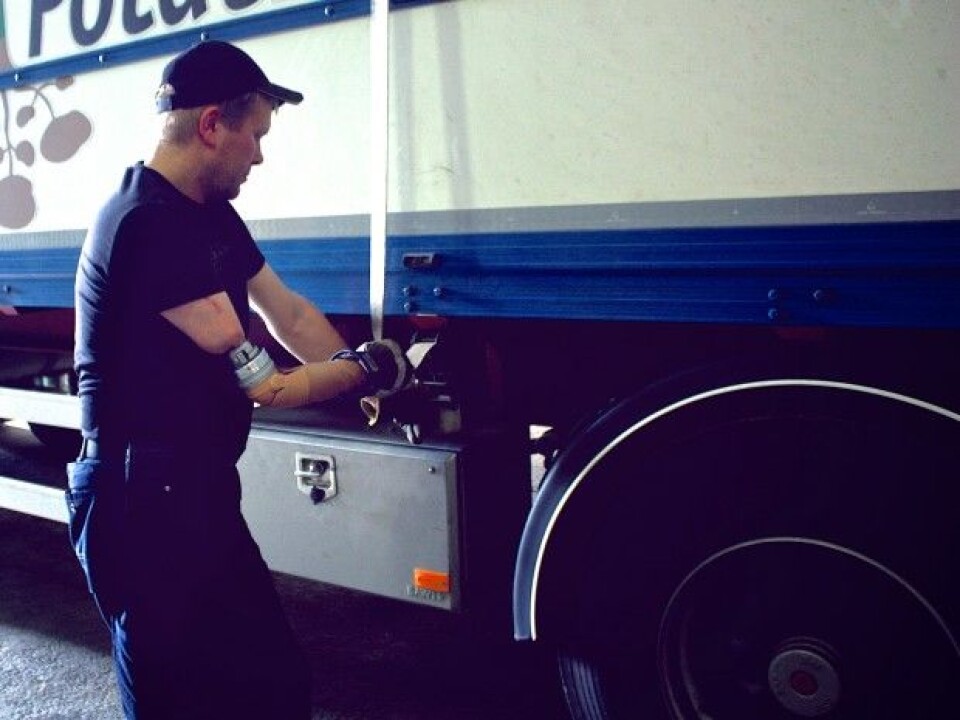
“We have created a stable and long-lasting fusion between man and machine,” Max Ortiz Catalan, a researcher at Chalmers University, says in a press release.
A real cyborg
The researchers believe that the sensors commonly used to control robotic prostheses are too unreliable. These sensors are placed on the skin, where normal physiological processes, like sweating, can interfere with the way they work.
The new control system works with a direct link to nerve endings and muscles in the patient. The system should provide more natural control of the arm because it allows the patient to feel what the hand is doing.
Information goes both ways through the wires, both to and from the arm, and the patient gets feedback from various pressure points.
The researchers believe that this is a significant step towards a more natural prosthesis, a kind of compensation for the lost arm.
“Intuitive controls and feedback are very important for interaction with the environment, such as knowing that you hold an object in your hand,” says Catalan.
According to the new study, the patient has lived quite normally with the prosthesis. He works as a truck driver in northern Sweden, and has not reported any difficulties in everyday situations.
The Swedish researchers will now concentrate on further development of the feedback system.
Direct link to the brain
There has been a great deal of research on prosthetics in recent years.
Italian scientists have developed a prosthetic hand that can capture sensations.
There has also been research on a direct link between the prosthesis and the brain.
---------------------------
Read the Norwegian version of this article at forskning.no
Translated by: Lars Nygaard








